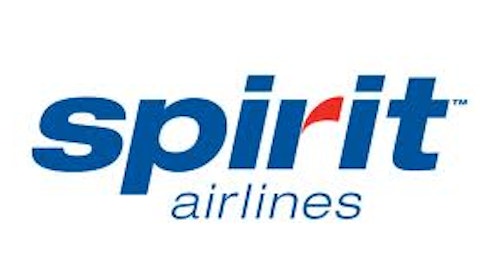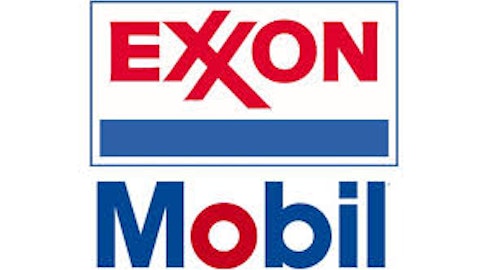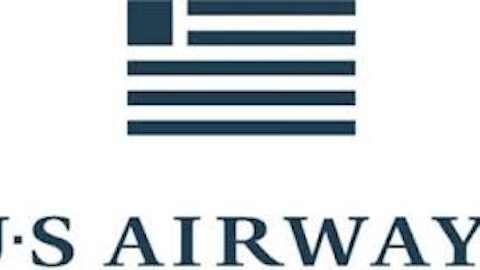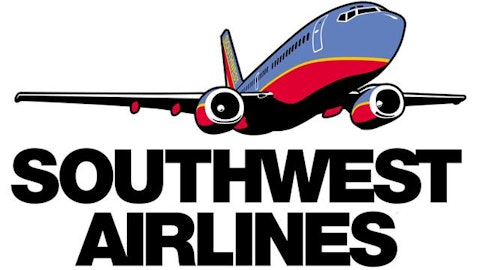A high degree of leverage, expensive personnel costs, and chronic over-capacity have generally made the airline industry a bad investment choice. However, the industry’s fundamentals have improved somewhat through recent consolidation, including the merger between Delta Air Lines, Inc. (NYSE:DAL) and Northwest in 2008 and Continental’s merger with United in 2010. Now, US Airways Group, Inc. (NYSE:LCC) has made a bid to become the industry leader, with its $11 billion deal to merge with bankrupt American Airlines. So, should investors buy into the combined company?
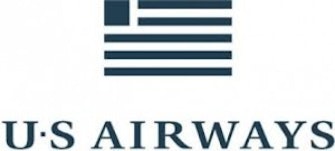
US Airways has bounced back from steep financial losses in 2008, with improving profitability and a stock price that has gained roughly 60% over the past 12 months. For FY2012, the company reported increases in revenue and adjusted operating income of 5.9% and 97.6%, respectively, over the prior year. It benefited from a modestly higher load factor for its flights, as well as a 4.4% increase in average passenger revenue per seat mile. In addition, US Airways was able to offset rising personnel costs with savings in its administrative overhead and maintenance categories.
The combined company expects to have a global base of operations that is capable of running 6,700 daily flights to over 330 destinations around the world. Management also estimates at least $1 billion in operating synergies, which are likely to come from combining duplicate facilities and negotiating better aircraft lease and fuel contracts. Plus, the combined company should have a stronger financial profile that would enable it to generate the capital needed to re-invest in its fleet.
Delta’s merger with Northwest provides a good blueprint for US Airways. The 2008 merger created a stronger company that was better positioned to withstand the industry’s volatility. After posting operating losses in 2008 and 2009, Delta’s results have bounced back the past three years, due to rising demand for air travel and greater load factors on its flights. In addition, the company has reduced flights and upgraded its fleet to more fuel-efficient models.
In FY2012, Delta reported increases in revenues and operating income of 4.4% and 10.1%, respectively, compared to the prior year. The company’s operating margin benefited from stable, non-fuel operating costs, as well as strong average pricing for its flights in most regions around the world. Unlike US Airways, though, Delta was not as successful in hedging against rising fuel prices, which led the company to acquire a refinery in Pennsylvania during the period. By eliminating the refinery’s profit margin, Delta hopes to give itself a competitive advantage through direct sourcing of low-cost fuel.
Unfortunately, another merger will not change the fact that the industry is highly leveraged and is susceptible to work stoppages by its highly paid, mostly unionized workforce. In addition, the industry’s companies have high capital expenditure requirements and significant pension funding problems. A better investment approach would be to seek out the tertiary companies that are benefiting from a surge in travel. One of the best positioned companies in travel services is Tripadvisor Inc (NASDAQ:TRIP).
Founded in 2000, the company is one of the world’s largest online travel companies, with roughly 50 million monthly unique visitors and 75 million user reviews of lodging accommodations, restaurants, and destinations around the world. It has also been aggressively moving into the mobile space, with TripAdvisor reporting that 45 million people were using its smartphone application as of December 2012. While the company still receives over a quarter of its total revenue from former parent Expedia, it has been diversifying into related growing segments, including subscription-based business listings and vacation rentals.
In FY2012, TripAdvisor reported increases in revenues and adjusted operating income of 19.8% and 9.2%, respectively, versus the prior year. While growth in the company’s core advertising business slowed down during the period, it generated a 58.8% increase in its subscription-based segment with sharp increases in the number of property and business listings. More importantly, TripAdvisor’s operating cash flow continues to be very strong, with $239 million generated in FY2012, which it is using to enhance shareholder value through share repurchases.
The potential merger between US Airways and American Airlines takes out another competitor, which would likely improve profitability and pricing for the surviving companies. However, the industry’s cost structure remains highly risky and is dependent on reasonable fuel prices. Given continued growth in the online travel business, investors should focus on this segment and take a ride with TripAdvisor.
The article Should Investors Take a Ride on this Airline? originally appeared on Fool.com and is written by Robert Hanley.
Copyright © 1995 – 2013 The Motley Fool, LLC. All rights reserved. The Motley Fool has a disclosure policy.
